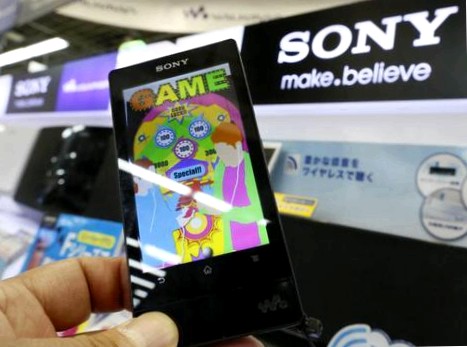
"Japan’s electronics giants in the valley of the trenches," "record loss spurs fears for sharp’s future," "despite restructuring: sony still deep in the red" – the headlines about the japanese electronics industry from the past year paint a gloomy picture, even if sentiment has recently brightened again thanks to the enormous devaluation of the yen and a rough economic stimulus package from the abe government. At japan’s leading electronics trade fair ceatec, sony, sharp, panasonic& co. But they continue to face questions about whether they will be able to keep up with the competition from south korea, china and california in the future.
Samsung in particular has taken a heavy toll on the once powerful japanese flagship company. The south koreans now dominate the television market, produce by far the most smartphones, and are also a global giant in the semiconductor business. Meanwhile, sony struggled with losses for years. And the highly indebted sharp group had trouble convincing urgently needed investors.
At ceatec in tokyo, however, the companies don’t want to talk about their mixed balance sheets, but instead promote their technical innovations. Sony, panasonic and sharp propagate here similarly as few weeks ago on the berliner funkausstellung IFA television sets and computer displays, which compress more and more pixels on less and less space. But unlike the IFA, ceatec opens up a perspective on how consumers can actually benefit from these ultra-high resolutions of the new generation of screens.
The suppliers of the new "4K" televisions are faced with the challenge of being able to offer viewers films or other content in ultra-HD resolution at all. Sony, after all, has its own film studio and can supply a hard disk player with its "4K" devices, on which some ultra HD films are stored. But a regular supply of ultra-HD content was not yet in sight.
This could change with the olympic summer games 2020 in tokyo. At ceatec, people are counting on TV signals being produced and transmitted to viewers entirely in ultra-HD in seven years’ time. Thus a chapter in the history of technology from germany could be repeated in japan. In august 1967, then-vice chancellor willy brandt launched color television in the federal republic at the radio exhibition in berlin. But it was not until five years later, with the 1972 summer olympics in munich and the 1974 soccer world cup in germany, that color televisions found mass buyers, because until then there had been almost only black and white programs on TV.
The japanese mobile communications industry is also hoping for a major boost from the 2020 olympics. At ceatec, the japanese telecommunications company NTT docomo presented its ideas for a fifth-generation mobile communications network that would not break down even during a gigantic mass event like the olympics. A combination of different frequency bands and new antennas should make the network one hundred times faster than the current high-speed technology LTE and increase the data capacity by a factor of 1000. At the fair, the project won the "ceatec award" as the best technical concept of the show.
Whether japanese smartphone manufacturers such as sony, panasonic and kyocera will be able to profit from the trend, however, remains uncertain. Japanese telecom giant NTT docomo is not relying solely on top products from its own country, such as sony’s Z1, at least at ceatec. The docomo booths, where the latest samsung smartphones and the new iphone models from apple are on display, are densely crowded.